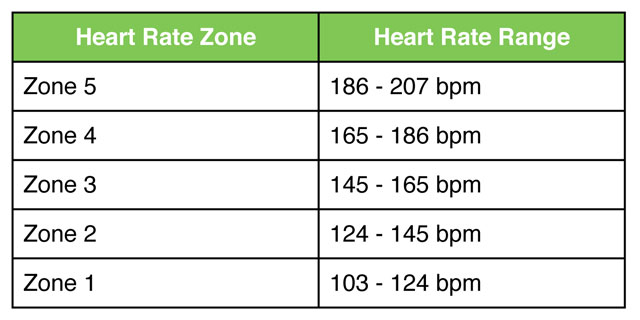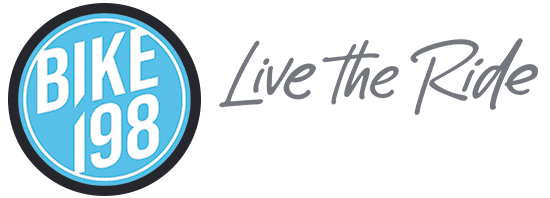In a recent poll conducted here on Bike198, we found that 61% of the riders that participated at least wear a heart rate monitor for training purposes and 47% of those polled wear a heart rate monitor on every ride. On paper, it makes sense why you would wear a heart rate monitor while riding. Your heart and the amount of time you spend in various heart rate zones directly affects how long you can ride from a distance and time standpoint. If you are looking to increase your fitness and the amount of time you can stay on the bike, the best way is to monitor your beats to make sure you are not over-exerting yourself and to dial in your ride so you are getting the most bang for your buck in increasing your fitness.

Before We Get Started: Your Heart Rate and Zones
Before we even get into the conversation about heart rate zones and where you should be to get the most out of your rides, you need to understand that everyone is different. Your heart rate zones, resting rate and peak rate are affected by a lot of variables in life that make your ideal situation different than anyone other rider’s. If you are unsure on where you should be, you should consult a doctor to get everything dialed in. Just because a rider that looks like you do and can ride around what you ride is in a specific zone…that does not mean you will be the same.
Your heart rate can be directly affected by any and all of the following:
- Individual anatomy
- Family history (hereditary)
- Diet
- Personal History
- Fitness Level
There are also some calculators online that are supposed to give you your max heart rate depending on your age…ignore those. The formula says I am supposed to be in the low 190’s/high 180’s and I will measure above 200 frequently and still be able to talk. Like I said…personal factors play a much bigger role than suggested.
Let me also specify by saying that I am out of the racing scene. I do briefly come out of retirement every now and then, but these days I want to be in good enough shape to pull the most out of every trail I can. From weekend epics to weekday sprints, I like to keep my fitness level at the point that I never feel like I have left something on the table or I could have ridden better if I was in better shape (hard to do in the winter sometimes).
Target Heart Rate Zones For Fitness
We all know that if you spend too much time in the red zone (zone 5), you are going to end up showing up and blowing up. Your body can only stay at an anaerobic pace for so long until your lungs, heart and muscles just give up. So what do we try to do while on the trail? We attempt to stay in aerobic heart rate zones to build fitness while saving our bodies for steep climbs and crazy fast downhills where we know we are going to dip into our peak rates in the interest of fun and necessity.
Your heart rate zones are split into 5 categories that are all 10% off your max heart rate. For my max, I use my highest measured heart rate. While my true max is probably 1 to 3 beats higher than that, it does give me a realistic baseline to work off of for riding purposes. (In my case it is 207 bpm)
Zone 5: 90 – 100% of Your Max HR
Your heart rate zone 5 is the redline. When you are at your complete max and can not give anymore to the point you feel like your chest is going to explode, you are sitting in zone 5 ready to blow up. We use zone 5 to go all out in short periods and to do interval training for sprints and other anaerobic activities.
Zone 4: 80 – 90% of Your Max HR
Zone 4 brings you to a more manageable level on the bike but is the crossing point. Your are still exerting a strong effort and getting fitter, but at this point you are crossing the aerobic to anaerobic exercise zone so your body can only hold this rate for a given period of time before the muscles start giving way due to lack of oxygen. For a typical “fit” person…this usually equals about an hour as you feel your muscles start to burn.
Zone 3: 70 – 80% of Your Max HR
While you are in zone 3, your body is increasing blood flow, increasing the size of your heart and training your muscles to go for longer distances. Operating in this heart rate zone is your aerobic exercise that ultimately increases fitness level. On most rides, this is your ideal “just riding along” heart rate zone that will not only build fitness, but it will also save your body for the more strenuous sections of trail that will require you to dip into anaerobic heart rate levels.
Zone 2: 60 – 70% of Your Max HR
If you are looking to lose weight, I have often heard zone 2 as “the fat burning zone”. At this point in your heart rate, your body is the most efficient at burning off the fat and losing weight.
Zone 1: 50 – 60% of Your Max HR
Exercising is zone 1 is your healthy zone. It basically equates to a brisk walk and while it will keep your heart and lungs healthy, you are not building anything in this heart rate zone. You will use this zone at the beginning of your warm up and the end of your cool down.
So if we look back at my example with a max heart rate at 207 bpm…my zones would calculate out to this.

The Big Question: What does this mean for my riding?
While all of this information is great…what does it mean for the recreational rider that is just looking to get stronger over time?
For me, my heart rate while riding tells me several different things.
- I need to spend most of my time in zone’s 3 and 4 – I use zone 3 to recover from zone 5’s and I will typically spend a lot of time in zone 4 trying to keep it in the lower end of the range to be able to increase distance. On the mountain bike, it is a lot harder to control heart rate zones due to the nature of the riding…especially if you are riding technical trail with a lot of elevation change. On the road bike, it is much easier to control these zones with cadence and speed and that is why many mountain bikers use road bikes for training purposes.
- It keeps track of how much time I have left – If I spend a lot of time in zone 5 on one ride, I already know my time is short. During a race, you are able to directly affect your performance and length by staying within certain heart rate zones and while riding your favorite trail…the same theory is applied. Especially when I know the trail really well, I will dial it back on sections that I do not enjoy as much (boring climbs and flats) so I can kick it up on downhills and technical descents. If I exert the same energy on the boring sections as I do the ones I enjoy…my time is limited and I will not be able to pin it when I want to.
- My heart rate tells me how to get stronger – Personally, I have a really hard time gaging my body on rides. When I hit the trail…I am ready to hit it hard and that can equal a show up and blow up pretty quickly. Especially when I have trips planned in the future, I need to carefully monitor how I am riding to insure that I am actually getting stronger on the bike instead of operating in the anaerobic zone which can make you weaker with time. Since my self monitoring is terrible, a heart rate monitor and close attention to which zone I am in is the only way I can really get stronger.
For the longest time, I quit wearing heart rate monitors because they were uncomfortable. What I did find is that you get used to them with time and now I barely notice it is even there. The benefits of wearing one…in my opinion at this time…drastically outweigh any negatives that come with the extra expense or one more thing that has to be plugged in before you ride. I have had the best luck combining devices by using the Garmin 705 and Garmin 800 to pull GPS, statistic recording and heart rate monitoring all into one device.

